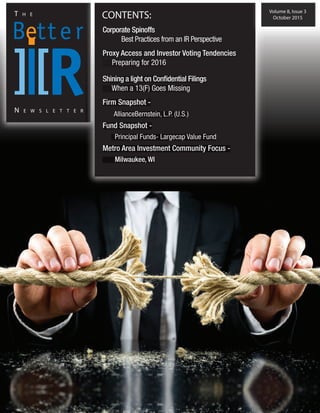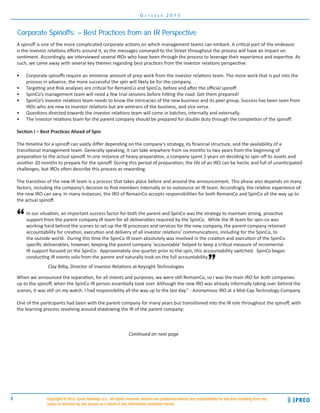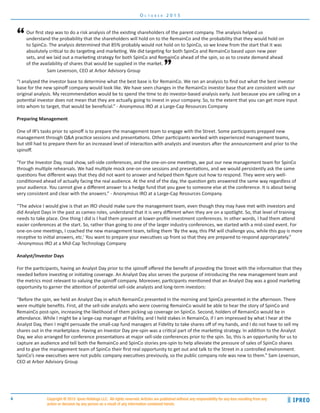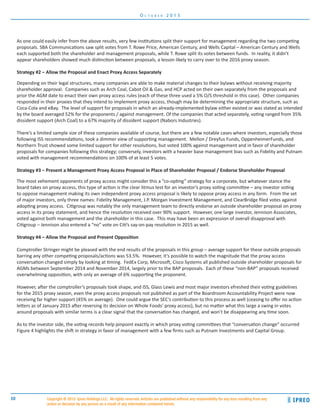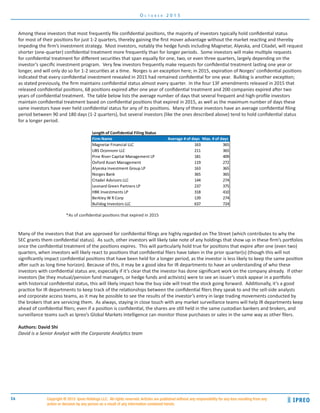This document provides best practices for investor relations around corporate spinoffs based on interviews with IROs who have experienced spinoffs. Some key points:
- Extensive preparation is needed in advance, including targeting and risk analyses, preparing management for increased investor interactions, and analyst days to educate investors on the spinoff companies.
- Roadshows and rehearsals help prepare new management teams and educate potential new investors.
- Post-spinoff, the main challenges are transitioning to long-term shareholders and using management's time effectively to attract the right investor base long-term. RemainCo IROs may still field questions about the spun-off company.
